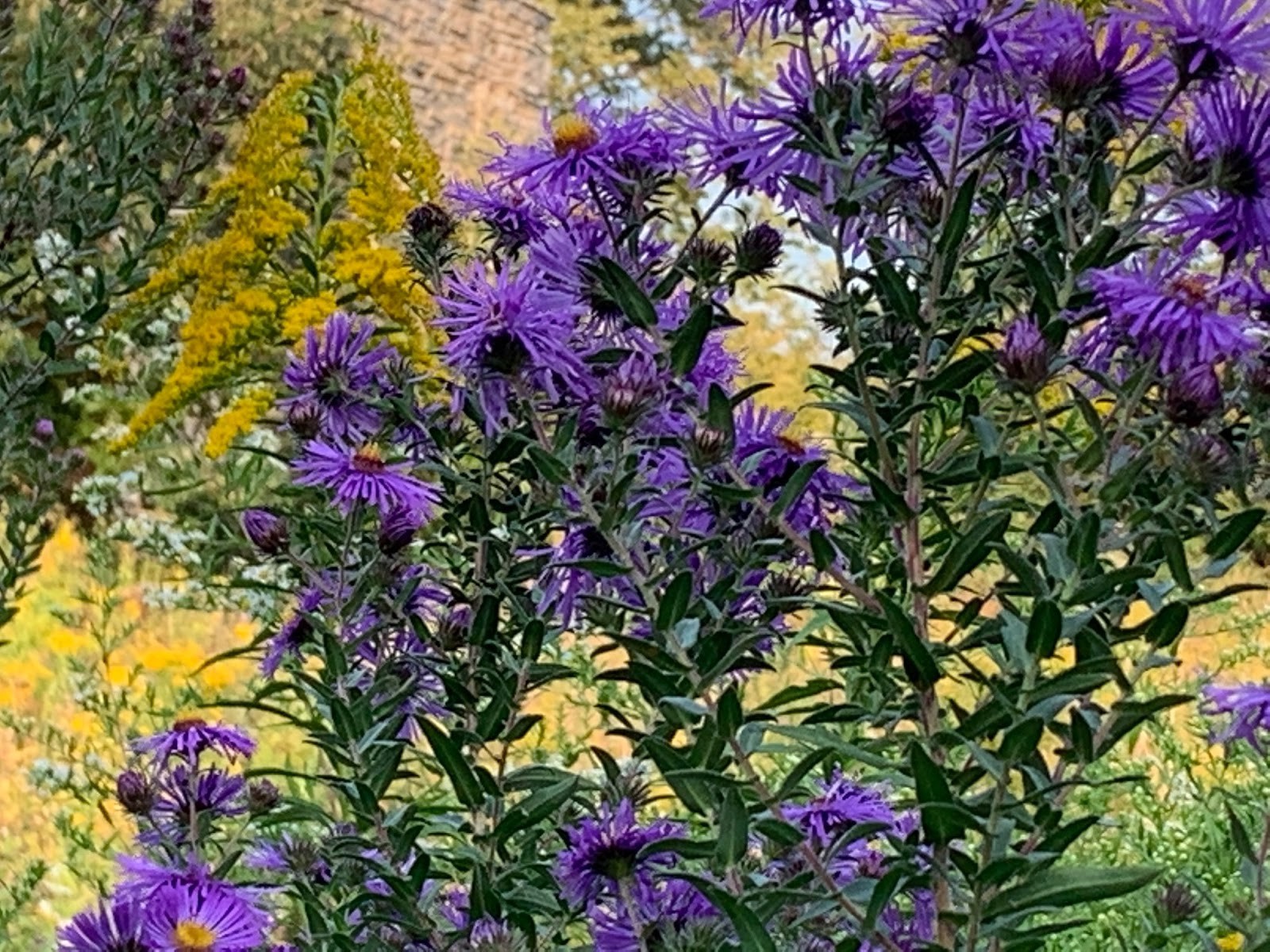Connected While Apart
September Teaching

New England Asters and Goldenrod 2020
Dear Mayfield,
As we get ready to say goodbye to September for another year, I want to pause briefly with one of September’s special treasures. This web note ties back to #52 from September 10th when I brought up the topic of autumn color. In that earlier web note, I mentioned the impact of color correction in the final version of Randy’s film, Plants, Pollinators, and Prayers, compared to a late edit of the film that Diana, Peggy, and I saw shortly before we entered pandemic time. The impact of color correction was huge.
I am currently delighted to be reading Robin Wall Kimmerer’s Braiding Sweetgrass. In addition to being an award-winning nature writer, she is a distinguished professor in Environmental Biology at SUNY (State University of New York). As writer and professor, she is masterful at blending her indigenous heritage and her scientific training. My father taught in the SUNY system for almost sixty years. Kimmerer is a year younger than I am, also born in September in upstate, New York. Reading her is for me like returning to an earlier home and the initial land that shaped me. She has written this description of the September colors on the land that greeted us both in the early 1950’s:
People flock to our hills for the fiery suite of October but they often miss
the sublime prelude of September fields. As if harvest time were not
enough–peaches, grapes, sweet corn, squash–the fields are also embroidered
with drifts of golden yellow and pools of deepest purple, a masterpiece.
(Braiding Sweetgrass, 40)
The golden yellow of which she writes is goldenrod and the deepest purple is worn by New England Asters.
Kimmerer writes of her long love of both flowers and her fascination with the relationship between them. When she bravely went to forestry college in the SUNY system, an unusual choice for a woman of her age, she tried to explain in her freshman intake interview how important to her was the wonder she felt at the beautiful connection between goldenrod and New England asters. In response, a serious professor told her that was not an appropriate interest for a budding biologist. It would take her some years before she could fully reclaim that wonder. Again she has written:
The question of goldenrod and asters was of course just emblematic of
what I really wanted to know. It was an architecture of relationships, of
connections that I yearned to understand. I wanted to see the shimmering
threads that hold it all together. And I wanted to know why we love the world,
why the most ordinary scrap of meadow can rock us back on our heels in awe.
(Braiding Sweetgrass, 46)
Along the way her artist friends pointed out that purple and golden yellow are complementary colors on the color wheel and yield a strong vibrancy to one another. If she had had an occasion to ask the Monarchs, they would have informed her that both plants are bountiful in fall nectar; that shared abundance is critical to Monarchs’ nourishment for their long migratory journey and the winter to follow. Goldenrod and New England Asters are indeed their superfoods. The coordination of their blooming schedule as fall flowers is an essential element in the success of Monarchs on the move.
Kimmerer is able to be a scientist, a lover of beauty, and a spiritually mature human being all at the same time. At essence, to borrow a phrase from her, spirituality is “an architecture of relationships.” And in that architecture, are the seeds of a life that is aesthetically rich and a life with concern for just living. For justice too involves “an architecture of relationships.” It’s all about the composition of who we are together.
Large realities of 2020 put a strain on our relationships whether we are cooped up at home with two many people in too little space for too much time or if isolation, an extra large amount of time by ourselves, is getting old in our daily rhythms. Let September’s goldenrod and New England asters side by side help us to remember there is both beauty and significant opportunities to give beyond ourselves to others in our connecting threads. There will be a time again when we can live more fully into this truth. For the architecture of our relationships is one of our most fruitful gifts to harvest.
Peace, Martha

